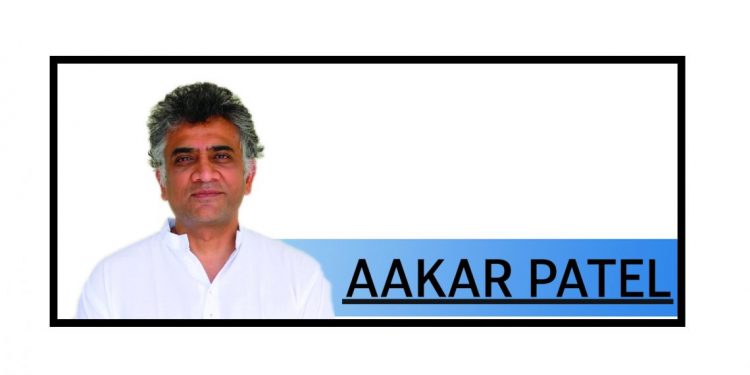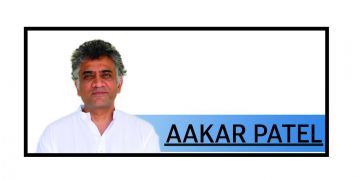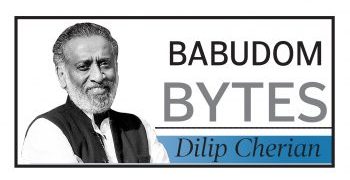There are two big ideas that India’s Prime Minister is committed to, and this commitment of his has shown itself over his years as leader.
The first is to birth a developed nation by 2047. India is to become like the United States and China, a great power that is wealthy and influential. This is a big idea that has no theory of change or pathway. Narendra Modi wants to get it done but he doesn’t know how. He hasn’t known how from the start. His courtiers recognise this and show it by going silent when the economy is in its usual or default mode, meaning delivering indifferent growth. But they crawl out to scream “fastest growing economy” and so on in the periods when there is a bump. Usually this is accompanied by a denigration of Nehru and his horrible policies, but Nehru did not gratuitously sabotage India’s economy or put the poorest and most vulnerable Indians through weeks of hardship with masterstrokes on currency.
For two years and three months before COVID hit in March 2020, meaning for nine straight quarters, the rate of GDP growth had been slowing. Why? The government did not say because that will mean accepting that there was no real pathway and no plan. When after COVID passed growth came to fill in the chasm left by the lockdown, the trumpets were taken off the wall again and hosannas sung to the master’s glory. Now, when again we are back to talk of slowdown, the sound of silence can be heard.
Modi’s most important champion on this front is Arvind Panagariya, economist and professor at Columbia University. He was drawn to Modi on the assumption that Modi, like Panagariya, was a free-market man. He resigned as deputy chair of the NITI Aayog (the chair is Modi) in September 2017 to return to the US. Since then, he has been a critic of the Indian government’s protectionism. He believed that India’s tariffs on things like tyres and television sets, which came in 2020 would reverse the thinking of demonetisation, which was to formalise the economy, and encourage the creation of micro and small enterprises.
He said he was worried that the “wrong turn” taken in 2017 by Modi, towards protectionism, had not yet been reversed. After the Atmanirbhar Bharat plan was made public in August 2020, Panagariya said that “policy mistakes” by Modi on international trade were undoing the good work done in 1991. “What has this policy achieved in six years?” he asked of Atmanirbhar Bharat. “Imports of electronics goods have gone up from $32.4 billion in 2013–14 to $55.6 billion in 2018–19, while exports inched up from $7.6 billion to $8.9 billion over the same period. Predictably, protected and subsidised, several mobile phone assembly firms have come up during these years but they have not added up to a vibrant electronics industry. Nearly all locally owned firms are small by global standards with none that is about to turn into an export powerhouse.”
It may surprise the reader that a person with these views is a champion of Modi, but this is true. A headline from 3 February 2021 says: “Arvind Panagariya calls Budget 2021 ‘mind-blowing’, says hopes from PM Modi now coming true.” No, the hopes are not coming true. The problem here is the assumption that Modi had some strategic direction in the first instance. It is hardly Modi’s fault that Panagariya saw himself and his free-market ideology in the person of Modi. Panagariya flitted between adoration and deification of Modi one day and the next day producing a paper the key thesis of which was that India’s best growth years were actually from 2003–14.
So why do Panagariya and others like him continue to remain in awe? It is because of the second big idea that India’s Prime Minister is committed to. This is of course that of demolishing constitutional pluralism and installing a majoritarian state, where religious minorities are second-class citizens existing on sufferance. Here, unlike on the economy, there is an extremely successful programme. The results are before us and whether supports or opposes the Prime Minister, it cannot be denied that he has been effective in achieving what he had sought to, both in Gujarat and now across the country.
The legal route of discrimination, exclusion, harassment and persecution has been adopted by BJP states across the country. Laws on what Muslims eat, where they live and work, what they wear, who they can marry, how they divorce, how much representation they are allowed to have (actually not have) have become so widespread so as no longer be news. This has become such an ingrained part of India’s politics that a reversal is hard to imagine in the medium term, say of 15 years. This has been down to Modi and it is his great achievement. So long as he stays on this path, and he will because he does it out of belief and ideology, he will continue to have in his court those who keep looking for signs of his greatness elsewhere, such as on the economy.
By Aakar Patel






































